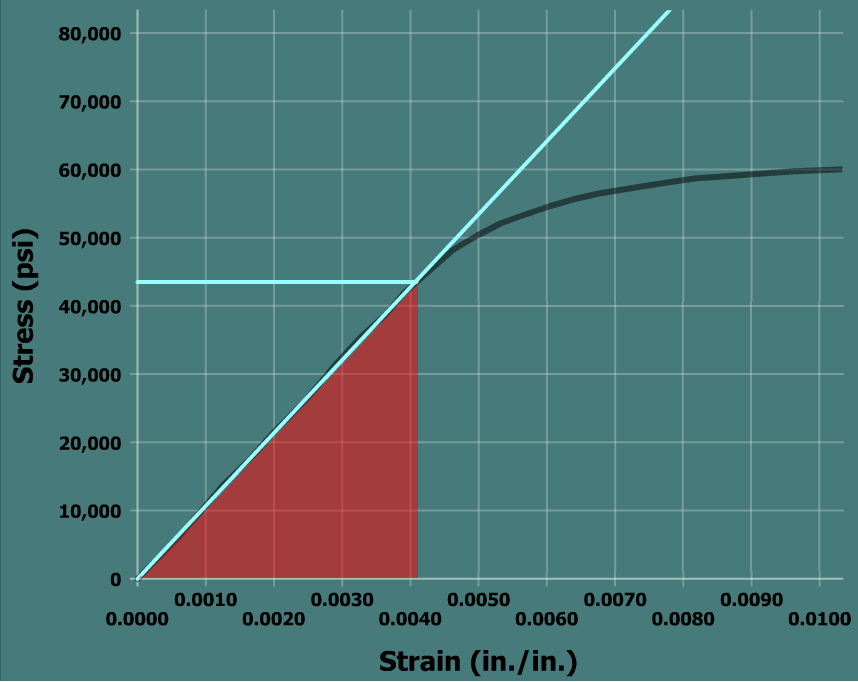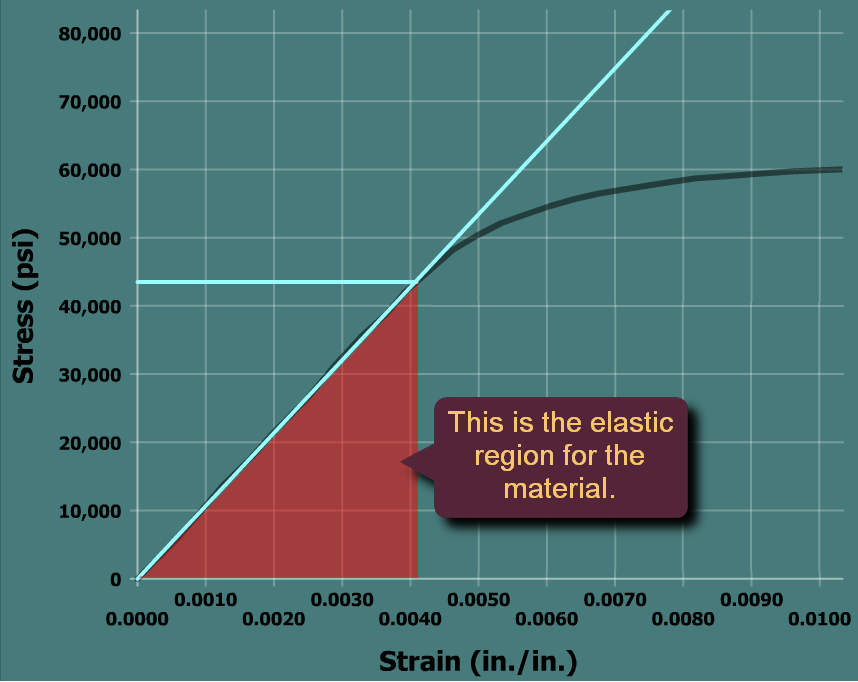

This property is called elasticity. It means that a material returns to its original dimensions during unloading. The material itself is said to be elastic in this region.
While the stress-strain curve for this material is linear, a material can be elastic even though its stress-strain curve is nonlinear.